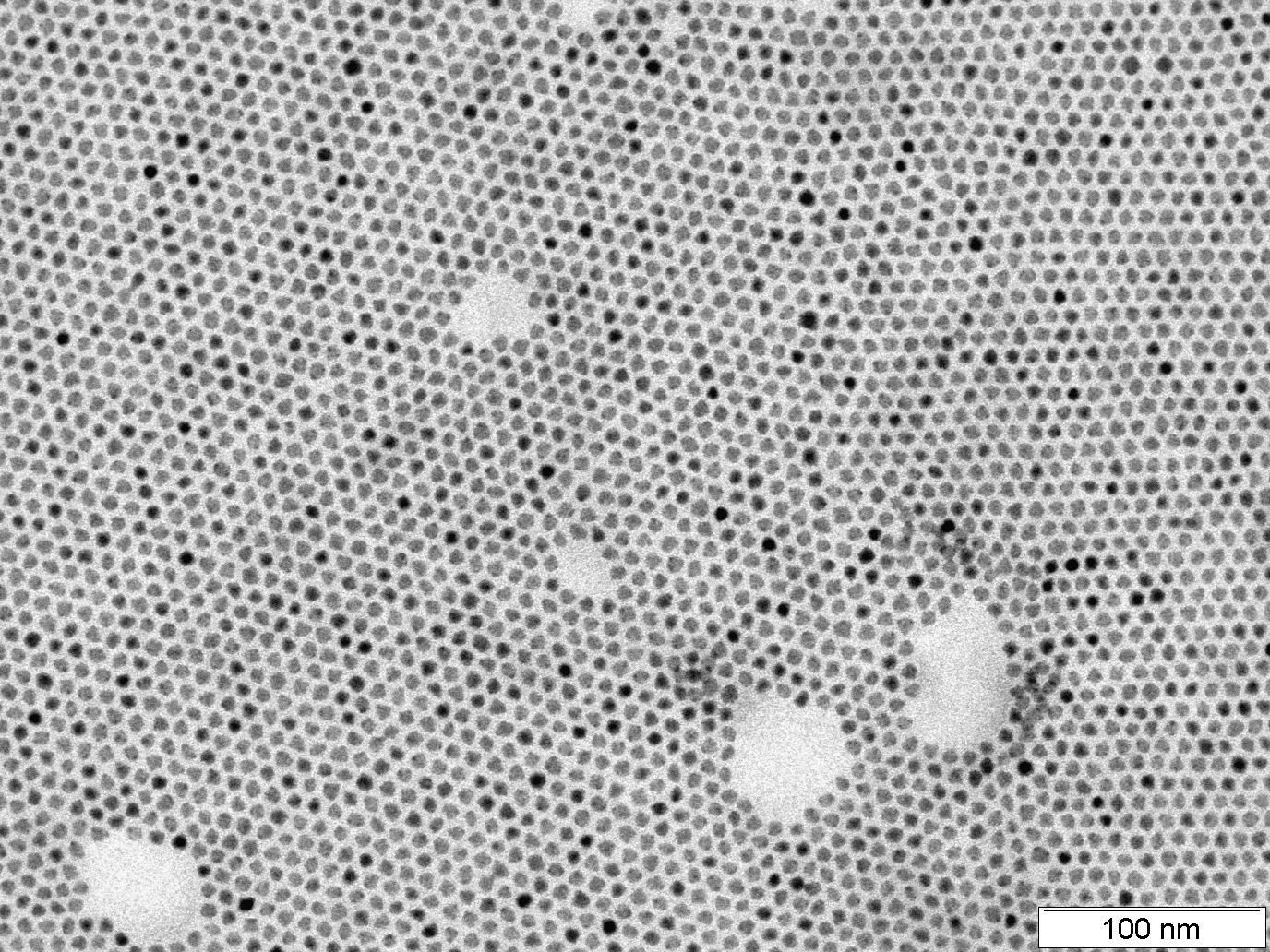The structure of lead sulfide nanoparticles frequently varies as they arrange themselves to develop organized superlattices. This phenomenon was observed in an experimental study at X-ray source PETRA III at DeutschesElektronen-Synchrotron (DESY).
 The lead sulfide nanoparticles, which are about 8 nm (millionths of a millimeter) in size, initially arrange themselves into a layer with hexagonal symmetry. Image Credit: University of Hamburg, Stefan Werner.
The lead sulfide nanoparticles, which are about 8 nm (millionths of a millimeter) in size, initially arrange themselves into a layer with hexagonal symmetry. Image Credit: University of Hamburg, Stefan Werner.
A research team guided by DESY researchers Irina Lokteva and Felix Lehmkühler, from the Coherent X-ray Scattering group headed by Gerhard Grübel, had traced the self-organization of these semiconductor nanoparticles in real time.
The study helped to gain better insights into the self-assembly of nanoparticles, possibly leading to different remarkable structures. The study outcomes were published in the journal Chemistry of Materials.
Besides other applications, lead sulfide nanoparticles are employed in light-emitting diodes, photovoltaic cells and other electronic devices. The researchers attempted to study how the particles self-organize to make a highly ordered film.
The scientists performed this by placing a drop of liquid (25 millionths of a liter) containing the nanoparticles within small cells and letting the solvent evaporate gradually over 2 hours. Then, they used an X-ray beam at the P10 beamline to instantly observe the resulting structure during the assembly.
Surprisingly, the structure underwent changes several times during the process.
First we see the nanoparticles forming a hexagonal symmetry, which leads to a nanoparticle solid having a hexagonal lattice structure. But then the superlattice suddenly changes, and displays a cubic symmetry. As it continues to dry, the structure makes two more transitions, becoming a superlattice with tetragonal symmetry and finally one with a different cubic symmetry.
Irina Lokteva, Scientist, Coherent X-ray Scattering Group, DeutschesElektronen-Synchrotron
The sequence was not observed in such detail before now. The researchers stated that the hexagonal structure (hexagonal close-packed, HCP) persists for as long as the particle surface is swollen by the solvent.
As soon as the film dries slightly, its internal structure turns into a cubic symmetry (body-centered cubic, BCC). But the solvent residue still exists between the individual nanoparticles within the film. During this evaporation process, the structure transforms twice (body-centered tetragonal BCT and face-centered cubic FCC).
According to Lokteva, the resulting structure of the film relies on several different factors. This includes the type of solvent and the speed of evaporation, concentration and size of nanoparticles. It is also based on the properties of the so-called ligands that envelop the particles and their density.
Researchers tend to use the word ligand to define particular molecules that attach to the surface of the nanoparticle and restrict them from agglomeration. The scientist used oleic acid for the study, as its molecules are capable of covering the particles, similar to the wax that prevents gummy bears from sticking to each other in a bag. This is known to be a widely recognized process in the field of nanotechnology.
Our research indicates that the final structure of the superlattice also depends on whether the individual nanoparticles are surrounded by many or few oleic acid molecules.
Irina Lokteva, Scientist, Coherent X-ray Scattering Group, DeutschesElektronen-Synchrotron
“In an earlier study, we obtained films with a BCC/BCT crystal structure when the ligand density was high. Here, we specifically looked at nanoparticles with a low ligand density, and this led to an FCC structure. So when using nanoparticles, the ligand density ought to be determined, which is not a standard practice at the moment,” added Lokteva.
The team notes that the observations are key considering other materials.
Lead sulfide is an interesting model system that helps us to better understand the general mechanisms by which nanoparticles self-assemble.
Irina Lokteva, Scientist, Coherent X-ray Scattering group, DeutschesElektronen-Synchrotron
“Nature can provide nanostructures with various interesting properties via the phenomenon of self-assembly, and we now have the tools to look over nature's shoulder as it constructs these structures,” concluded Lokteva.
Journal Reference:
Lokteva, I., et al. (2021) Real-Time X-ray Scattering Discovers Rich Phase Behavior in PbS Nanocrystal Superlattices during In Situ Assembly. Chemistry of Materials. doi.org/10.1021/acs.chemmater.1c02159.